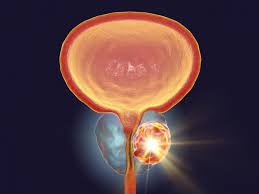Latest Articles
Int Urol Nephrol
Comment on “Surgical outcomes of endoscopic enucleation of the prostate in community aging males wit...
Not applicable. Hsu TS, Weng SC, Lin YH, Chen CL, Tsao SH, Tsai HY, Juang HH, Chang PL, Hou CP (2024) Surgical outcomes of endoscopic enucleation of the prostate in community aging males with or without preoperative urinary retention. Int Urol Nephrol. https://doi.org/10.1007/s11255-024-04007-7 Article PubMed Google Scholar Pang KH, Ortner G, Yuan Y, Biyani CS, Tokas T (2022) Complications and functional outcomes of ...
Read MoreWorld J Urol
Robotic-assisted radical cystectomy with cutaneous ureterostomies: a contemporary multicenter analys...
Conclusion : RARC + UCS may offer lower complication and readmission rates without the need to perform enteric anastomosis, it can be considered in a selected group of patients with competing co-morbidities, or limited life expectancy. Larger prospective studies are necessary to validate these results.
Read MoreEur Urol.
Re: Jim C. Hu, Melissa Assel, Mohamad E. Allaf, et al. Transperineal Versus Transrectal Magnetic Res...
I read with great interest the article by Hu et al comparing the rate of infectious complications between tranperineal (TPBx) and transrectal (TRBx) magnetic resonance imaging–targeted and systematic prostate biopsy. The authors describe a well-constructed clinical trial and conclude that there is no statistically significant difference in infection rates between TPBx and TRBx. However, several points concerning the...
Read MoreCan J Urol.
How I Do It: Teaching holmium laser enucleation of the prostate (HoLEP)
Holmium laser enucleation of the prostate (HoLEP) is considered a size-independent technique to treat benign prostatic hyperplasia. This safe and effective procedure is increasingly being adopted in urology training programs worldwide, yet limited teaching strategies have been described. Endoscopic handling during HoLEP allows for a simultaneous interaction between the surgeon and trainee, facilitating a guided teach...
Read MoreCan J Urol.
Holmium laser enucleation of the prostate for a case of transition zone prostate cancer
Standard treatment approaches for localized prostate cancer remain limited to active surveillance, radiotherapy, and radical prostatectomy. We present a case of transition zone prostate cancer that was treated with holmium laser enucleation of the prostate, a procedure that is normally reserved for the management of benign prostatic hyperplasia.
Read MoreInt Urol Nephrol
Surgical outcomes of endoscopic enucleation of the prostate in community aging males with or without...
Conclusion : Both ThuLEP and B-TUEP were effective in treating BPH-related bladder outlet obstruction. Our study identified more pronounced changes in IPSS total, IPSS voiding, and prostate-specific antigens within the UR group. Moreover, the rate of postoperative UR in this group was not higher than that observed in the non-UR group. Our study also revealed that the presumed benefits of laser surgery in reducing blo...
Read MoreWorld J Urol
Antibiotics efficacy in clinical and microbiological cure of uncomplicated urinary tract infection: ...
Conclusion : The network meta-analysis demonstrated that Fosfomycin is the most effective antibiotic in treating uncomplicated UTIs with respect to clinical cure, microbiological cure, and adverse events profile.
Read MoreJ Pedia Urol
Bladder dysfunction in adolescents with type 1 diabetes
Conclusion : In conclusion, adolescents with type 1 diabetes, as well as healthy adolescents, frequently experience urological symptoms. Although urological abnormalities were not significantly more frequent in adolescents with diabetes in this study, the focus on nocturia and risk for bladder dysfunction seems relevant, even in adolescents without any other tests indicating autonomic dysfunction.
Read MoreInt Urol Nephrol
Preliminary results of the external urinary sphincter Uroflex® on the quality of life of patients wi...
Conclusion : The Uroflex® external urinary sphincter seems to improve the severity of urinary incontinence and quality of life of patients with male urinary incontinence after prostate surgery. These encouraging results will need to be confirmed in larger controlled studies.
Read MoreWorld J Urol
The role of urology and radiology in prostate biopsy: current trends and future perspectives - World...
Conclusion : There is no evidence to suggest that prostate biopsy should be solely performed by a specific specialty. The most important factor remains knowledge of the relevant anatomy and sufficient volume of cases to develop and maintain skills.
Read More





